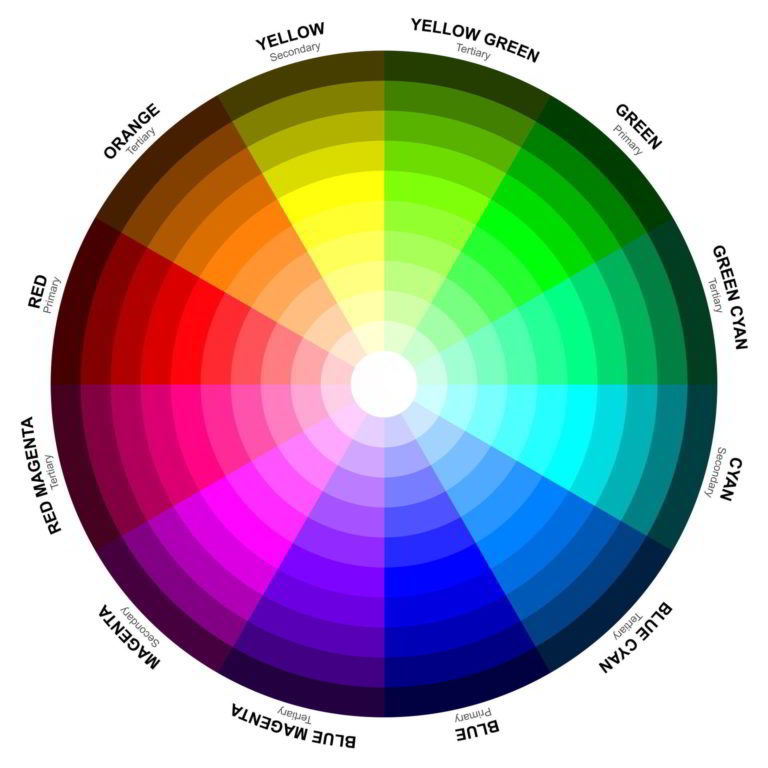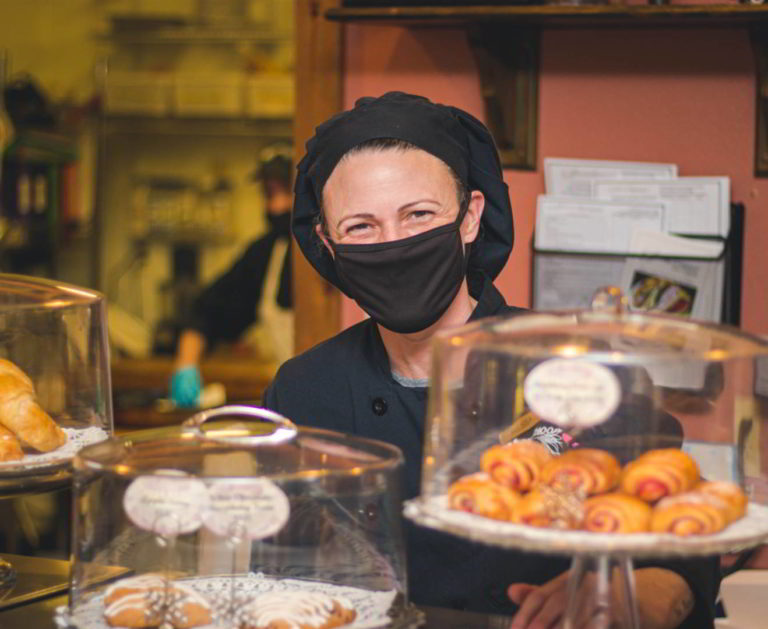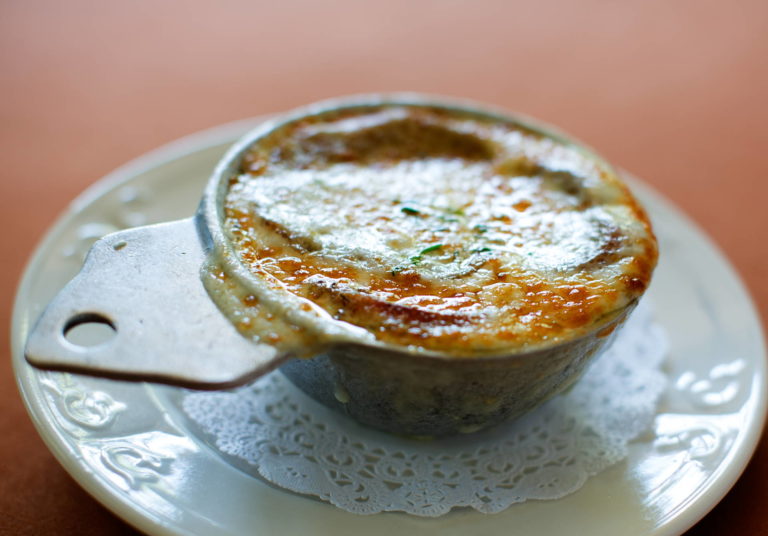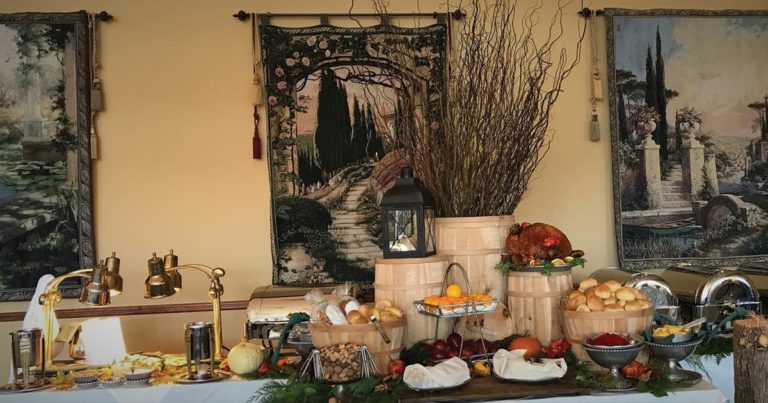If you missed our previous Food is Like Fashion article, be sure to check it out!
Color can be used to express mood, accentuate the corresponding seasons, and complement a plate or one’s persona. To understand the relationship of color to food and fashion, we discuss complementary colors, color triads, and the absence of color. Further, we explore how food colors are vibrant but often change with cooking; therefore, we dress the plate based on the cooked color of the menu items—not their garden-fresh color. Then we dig deeper into how fashion colors are everchanging based on style trends, personal taste, and the seasons.
Like salt & pepper, or Pierre Bergé and Yves Saint Laurent, complementary colors go together like a fork and knife or a hand in a glove – pun intended.
Digging Deeper into Color
Complementary colors are colors that produce neutral or grey-scale tones when mixed. These opposite colors cancel each other out. When complementary colors from the light spectrum are combined, they can also produce white. When placed next to each other, they create a strong contrast in color; therefore, complementing each other.
Complementary Colors are also called opposite colors, as they sit across from each other on the color wheel. There are many color theories that affect the opposite colors, but for the purposes of food vs. fashion, we will use the traditional primary opposites:
- Red (primary) – Green (complementary)
- Yellow (primary) – Purple (complementary)
- Blue (primary) – Orange (complementary)
Primary Colors are the foundation for all colors in the spectrum. They are the triad of the color wheel harmonizing with each other and creating visual inspiration, motivation, and variety.
Secondary Colors are made by mixing equal parts of two primary colors – for example, when combining primary blue and yellow, we create the secondary color of green.
Blue and red combined make purple. yellow and red create orange.
Lastly, tertiary colors are created when mixing a primary color and a secondary color – many variations are made based on the relative ratio of the secondary color to its primary partner.
Primary, secondary, and tertiary colors create yet another color triad.
Now we relate these two-color triads to our food and fashion triads:
- Protein – Starch – Vegetable
- Foundation – Alteration – Best Feature
SCI Fisherman's Catch – baked cod oreganata, white wine poached salmon, and shrimp and scallop scampi:
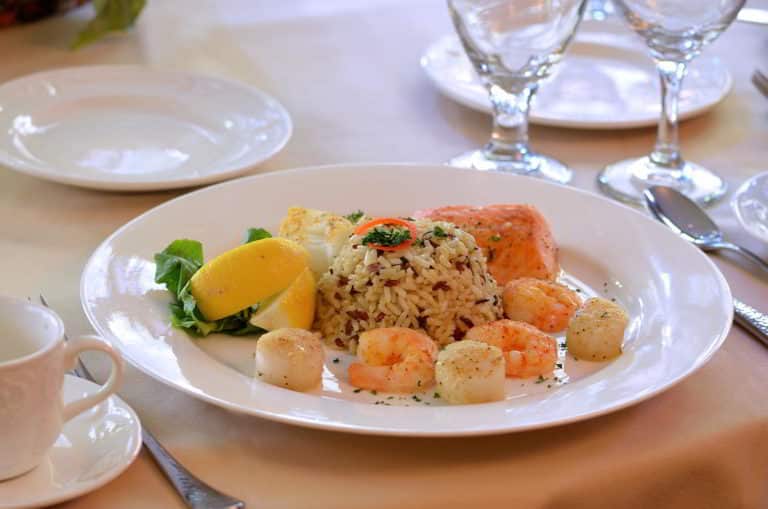
The best way to demonstrate how color works in food is to dissect a finished plate, in this case, an SCI Fisherman’s Catch.
The primary colors on the plate are yellow and red; both featured in the plate garnish – fresh lemon and red pepper curl.
The secondary color of the green lettuce is a complement to the garnish. The tertiary colors created by the primary red and yellow make up the beautiful creamy orange colors of the protein that surrounds the plate. The vegetable-infused rice anchors the dish and completes the food triad.
Let's try another SCI menu item; here is a signature recipe called Linguini Spinacio e Pomodoro:
The primary color on this plate is the red of the sundried tomatoes. The secondary color is the green of the fresh spinach, and a tertiary color is created by mixing red and green to make the yellow in the semolina linguini. Our vegetables and starch are quite evident. The roasted pine nut adds a plant-based protein, while the shards of Pecorino Romano are rich in protein from sheep’s milk; both complete the food triad in Linguini Spinacio e Pomodoro. Are you ready to eat with your eyes and your mouth?
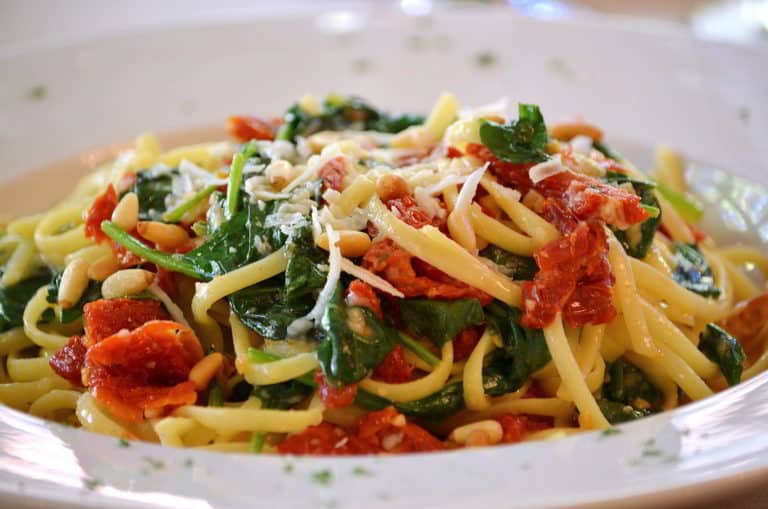
Next, we move on to the fashion triad and how it relates to the color triads. Again, to demonstrate the two, we will use a familiar photo taken at Stroudsmoor – The Wedding Party Formal. Here, the now Mrs. Alysea Palanisamy with her maids Megan and Patricia show off their color savvy in these beautiful ensembles.
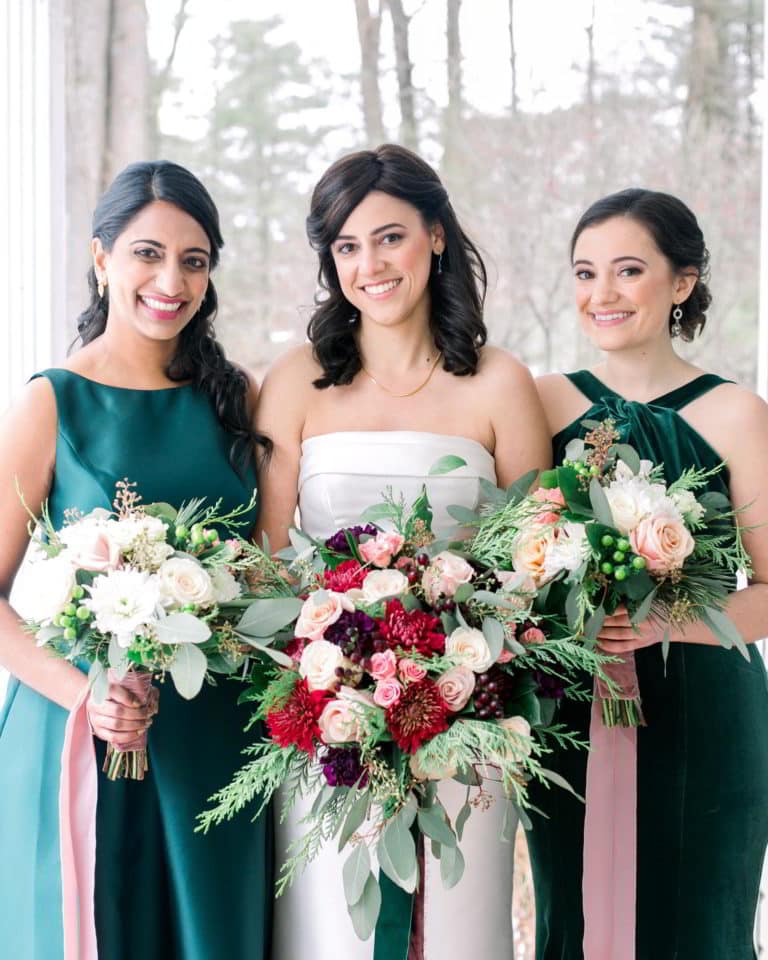
First, the Fashion Triad:
- Foundation – each dress reflects a different upper body foundation based on the dress’s neckline, strapless, halter, and over-the-shoulder.
- Alteration – the ladies’ dresses were perfectly fitted to their shapes, as are the floral bouquets that finish their wedding attire.
- Best Feature – the neckline gave homage to one of their best features, their long beautiful necks that give way to their stunning smiles. At the same time, the sleek satin sheath dresses accent their lovely figures.
The color triad:
- White – the absence of color symbolizing purity and innocence – is also considered a primary color and is the foundation of the photo. The white complements all the other colors in the garments, greenery, florals, and ribbon. Most importantly, it is the perfect backdrop for the primary red of the Disbud Chrysanthemum featured as the foundation of the Bridal Bouquet.
- Green – the secondary or complementary color to our foundation colors, red and white appears in the Bridesmaid dresses and the velvet ribbon cascading from the Bridal Bouquet stems.
- Pink – pink is a tertiary color created by combining the primaries red and white. The myriad of greens in the eucalyptus and pine is made by mixing the primary white with the secondary green.
Now Food vs. Fashion – by comparing the plate to the wedding garb, you can see how color connects food to fashion.
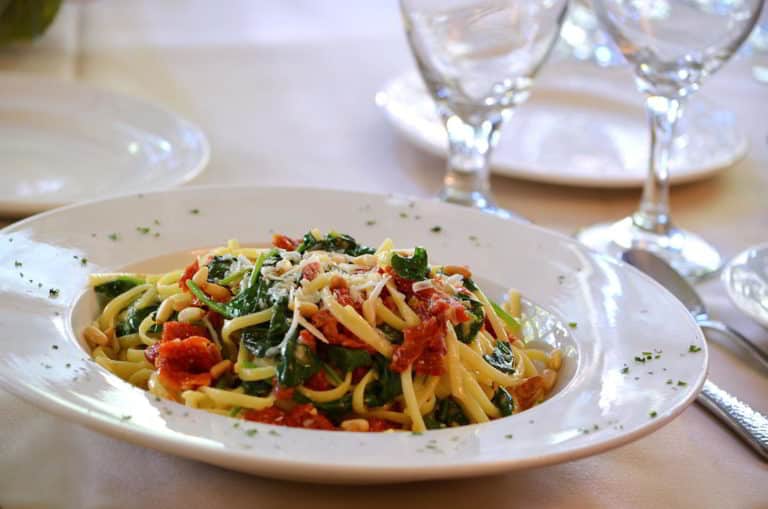
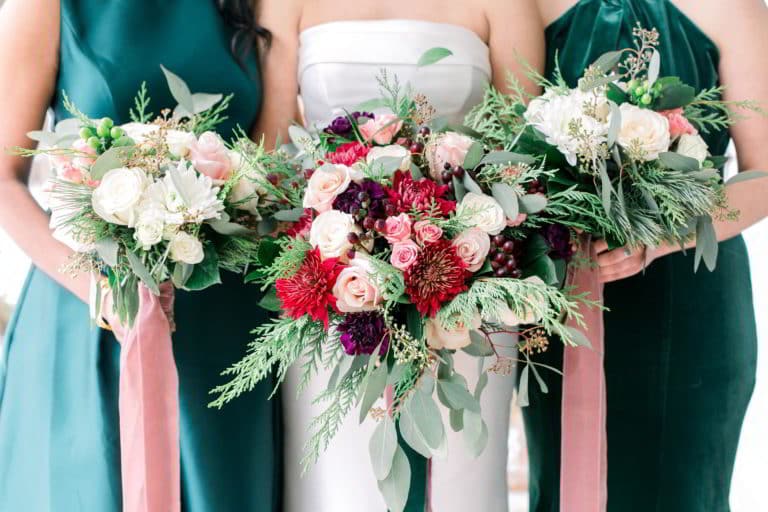
- Primary White – the plate and the gown create a foundation supporting both the entrée and the ensemble.
- Primary Red – creates drama and balance in both the meal and the mélange of flowers.
- Secondary Green – complements the primaries like the vegetable complements the protein, and the greenery complements the flowers.
- Tertiary Pink and Yellow – enhance the opposite colors (red and green), creating a trinity of eye-appeal, balance, and good taste.
Food and Fashion connect our bodies, our minds, and our souls. They are expressive of our moods, our ethnicity, and our beliefs. They embody our passion.

